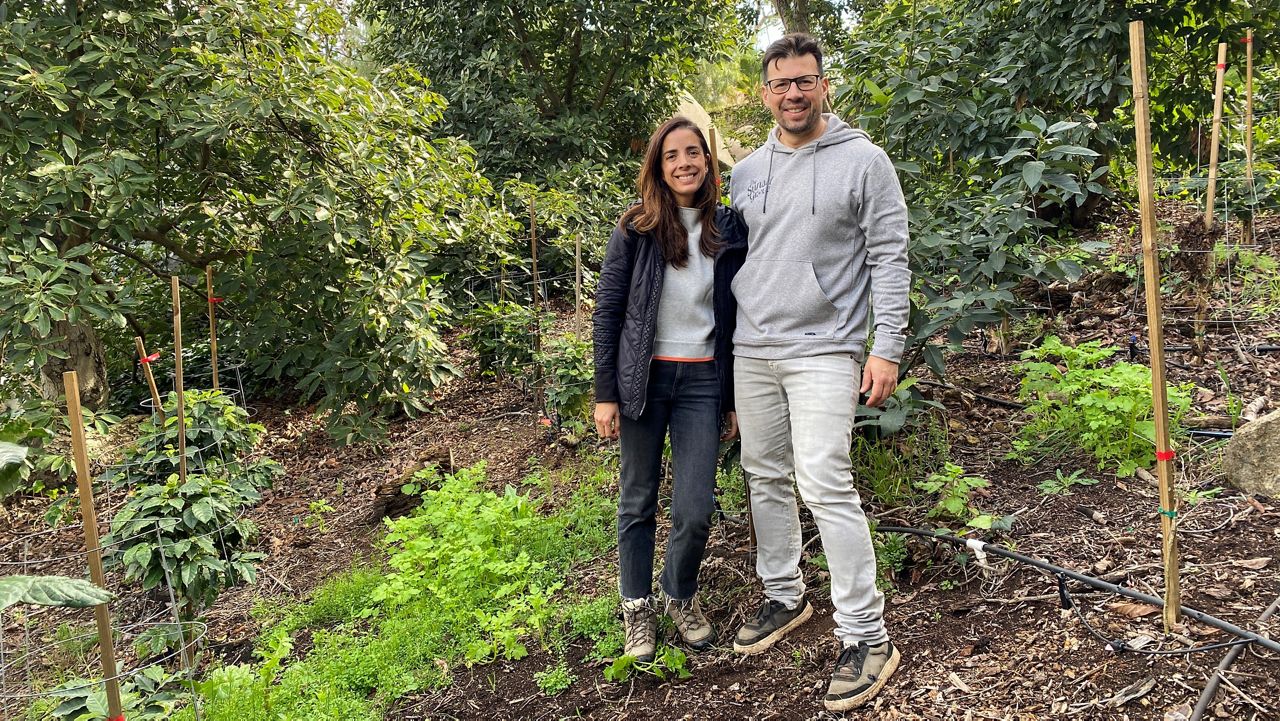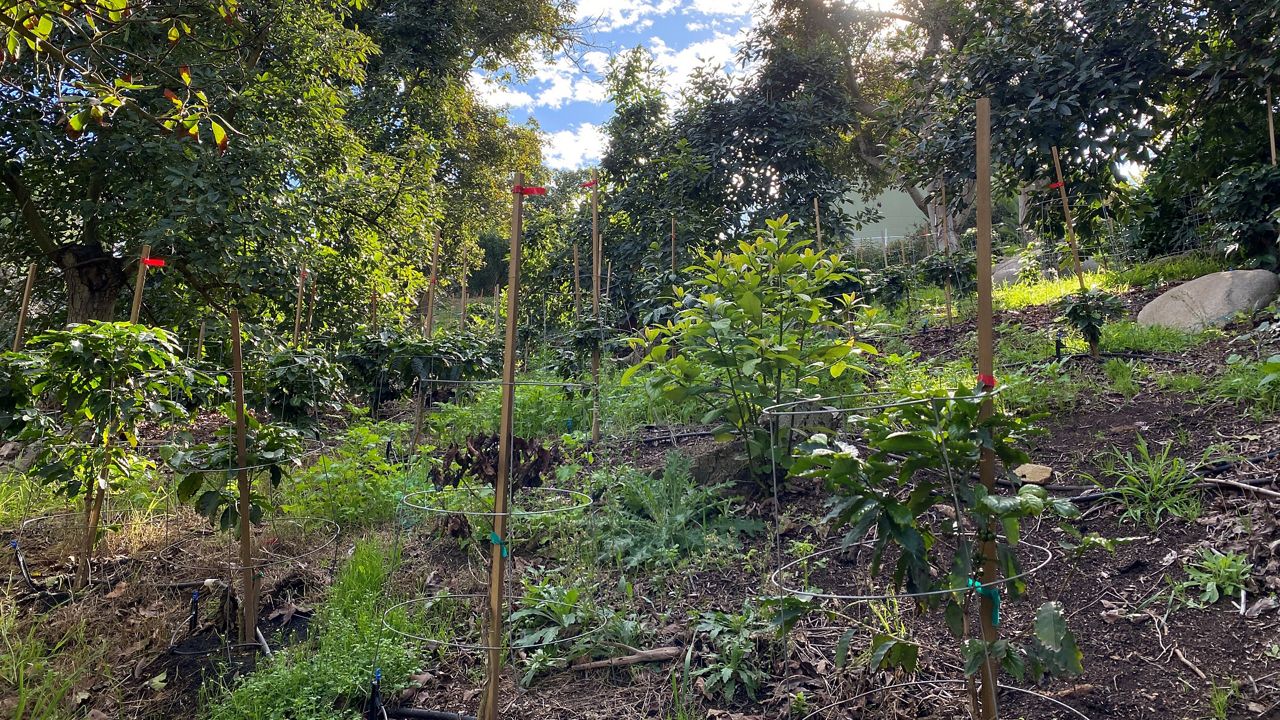SAN DIEGO — Farmers in Southern California are working to protect pollinators like birds, bats and bees.
Growing coffee in California reminds Fabio Patino of growing up in Columbia.
“I think it’s a super interesting crop and you know people love coffee!” Patino said.
Patino and his family took over The Sunset Grove farm about three years ago and immediately started working to restore a 20-year-old avocado orchard by switching to organic, regenerative farming practices.
“I think it’s important for everybody to be conscious about the way we grow our food and what we actually put on the table,” Patino said.
They are going beyond organic — building up soil health and creating habitat.

They’re now part of the Working Lands for Pollinators — a program by the Resource Conservation District of Greater San Diego County in partnership with the Carlsbad Partners for Fish & Wildlife office, Earth Discovery Institute and Point Blue Conservation Science — that creates or increases native pollinator habitat on commercial farms.
Codi Hale is the community programs manager and says they work with farmers to guide them and provide funding as they set up native plants like Black Sage, California Buckwheat and Hollyleaf Cherry.
These plants create a native habitat for pollinators like bees, birds, and bats to live alongside their crops.
“Our goal is to reduce this divide in thinking that farmland is production and then there is nature outside of it,” Hale said. “We’re really trying to bring the two together because they’ve always been together and we think that they support each other really well.”

According to the RCD of Greater San Diego County, globally, up to 75% of all flowering plant species and 35% of all food crops rely on a pollinator for reproduction. Hale says they hope to connect the corridors of safe habitat through farmland across California, helping the pollinators and the farmers.
“When these are in bloom at different times across the season, they bring a host of different pollinators that will help the production levels on your farm,” she said.
Patino says he is walking the line between running a profitable business and leaving the earth better than he found it.
“What we want to provide is an example on how traditional agricultural farming can also incorporate with pollinator habitat and conservation,” he said. “It doesn’t have to be exclusive.”
Hale says the program has reached 14 farms in the San Diego region so far. There are two years left in the program and they’re accepting new farms daily.



